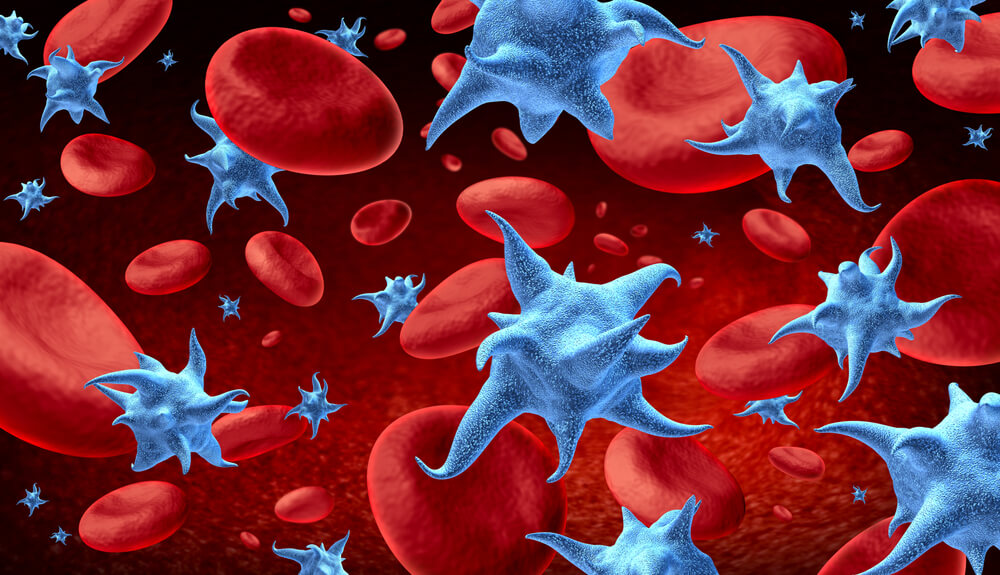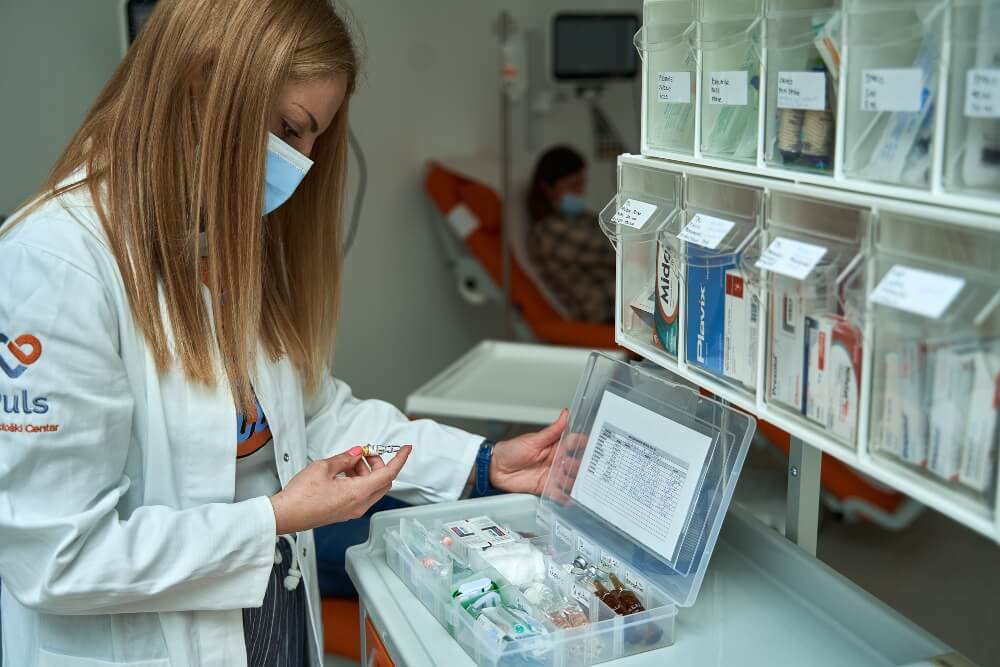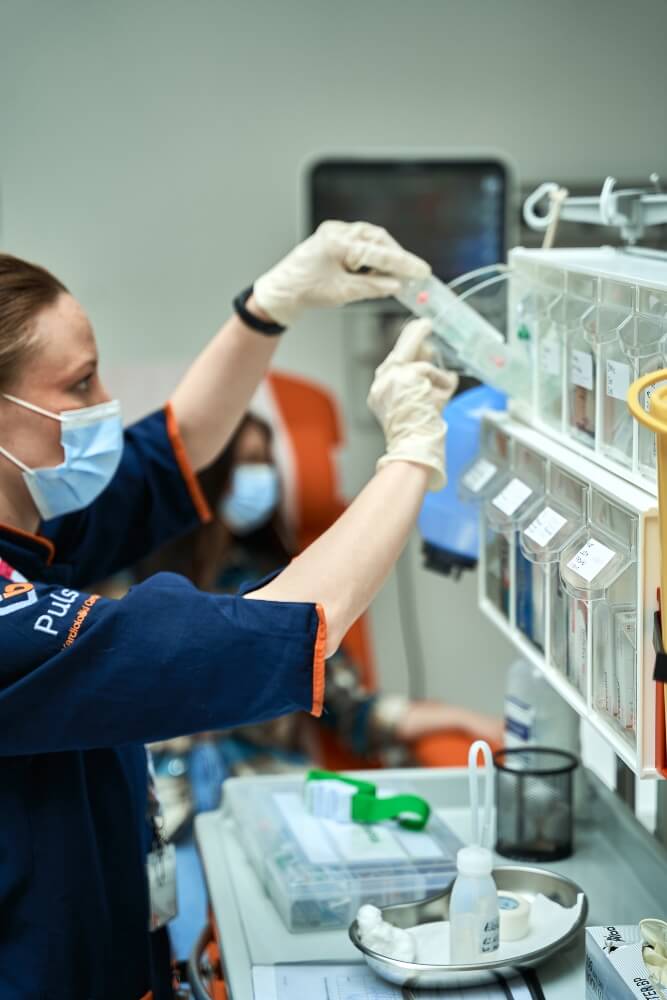We will try to explain and clarify all the parameters that are included in the basic blood laboratory analysis.
Although the aim of this text is to provide education, we emphasize that you should not draw conclusions about your health based solely on it. Only a healthcare professional, considering your overall health situation, can accurately interpret the values of a complete blood count and provide insights into their significance.
What does a complete blood count entail?
A complete blood count is important for diagnosing many problems that may exist in the body. It is not all-powerful or all-knowing, but in most cases, it provides doctors with valuable information on which direction to further investigate.
Interpreting a complete blood count helps determine the patient’s overall health status, nutritional status, as well as diagnosing infections, anemia, inflammation, and the effects of harmful substances on the body. We will list all the parameters you may see in your blood test results for a complete blood count.
Accurate interpretation of a complete blood count can only be done by a healthcare professional, specifically a doctor, and our Cardiology Center is proud to provide you with experts for this purpose.
Red Blood Cells – erythrocytes
Red blood cells, also known as erythrocytes, are the most commonly marked component on blood test results, either by their full name or the abbreviation RBC (Red Blood Cells). They are produced in the bone marrow and constitute the largest portion of the blood’s mass compared to other elements. Their role is crucial as they carry oxygen bound to hemoglobin from the lungs to all other parts of the body.
Their lifespan ends in the spleen, where they break down, releasing hemoglobin and electrolytes in the process. Reference values for red blood cells differ between men and women. In men, normal values range from 4.34 x 10^12/L to 5.72 x 10^12/L, while in women, they range from 3.86 x 10^12/L to 5.08 x 10^12/L.
Elevated values may indicate polycythemia and hemoconcentration, but they can also occur in healthy individuals. Lower values usually indicate anemia or bleeding.
Hemoglobin
Hemoglobin (Hb, Hgb) has already been mentioned in the context of red blood cells. It is a component of red blood cells responsible for binding and transporting oxygen throughout the body. Hemoglobin carries oxygen from the lungs to all tissues and releases it there. Once it releases oxygen, which is essential for tissue function, it binds carbon dioxide and carries it back to the lungs. In the lungs, carbon dioxide is released, and hemoglobin binds oxygen again. This cycle is vital for the body’s existence.
The normal range for hemoglobin is as follows: 110-180 g/L. Increased concentration may indicate polycythemia and hemoconcentration, while a decreased value may indicate anemia. Depending on the patient’s situation, sometimes dietary changes alone can help raise hemoglobin levels, while in other cases, medication may be necessary.
Hematocrit
Hematocrit represents the volume of red blood cells in a given unit of blood. You will often find it indicated as HCT on test results. Reference values differ between men and women. For women, normal values range from 0.356 to 0.470 L/L, while for men, the range is 0.41 to 0.53 L/L. Hematocrit, along with other parameters in a complete blood count, can provide important information for further diagnosis by your doctor.
Lower values are characteristic of conditions such as anemia, leukemia, thyroid problems, as well as for pregnant women and older individuals regardless of their health condition. Conditions like burns and liver problems, including cirrhosis, can also cause a decrease in hematocrit. In cases of dehydration and certain types of shock, the values may increase.
Erythrocyte Indices
These parameters provide important information about red blood cells and are observed and interpreted in conjunction with the results of a complete blood count.
- MCV (mean cell volume) – represents the average volume of blood and relates to the size of red blood cells. Values ranging from 81 to 99 fl are within the normal range. This parameter is important for the classification of anemias. Increased values are characteristic of megaloblastic anemia, as well as hypothyroidism, obstructive lung diseases, and liver cirrhosis.
- MCH (mean cell hemoglobin) – refers to the average amount of hemoglobin in a red blood cell. The reference values are 29-32.9 pg.
- MCHC (mean cell hemoglobin concentration) – this parameter indicates the average concentration of hemoglobin per liter of red blood cells, and normal values range from 310 to 350 g/L. Increased values may indicate dehydration.
- RDW (red cell distribution width) – this parameter can show whether there are different populations of red blood cells in terms of their size.
The reference range for RDW is 11.5-16.5%. Increased concentration may indicate certain hematological disorders.
Leukocytes
Leukocytes, also known as white blood cells (WBC), are produced in the bone marrow. Their role is to protect the body against various infections. The normal range for leukocytes is 3.9 – 10 x 109/L. An increase in the number of leukocytes usually indicates a bacterial infection, while a decreased count may be a sign of a viral infection, stress, or weakened immune system.
Of course, certain medications and therapies can also affect the number of leukocytes, which is why patients undergoing chemotherapy and strong medications need to have their leukocytes monitored more frequently.
White blood cells are divided into five types:
- Monocytes (MONO) – They play a crucial role in defending the body against infections. While they are immature cells, once they enter the tissues, monocytes enlarge, and their ability to fight infections increases.
The reference range for monocytes is 1 – 10%.
- Neutrophilic granulocytes (NEU) – They are the most abundant and essential for a strong immune response. Unlike monocytes, they are mature and can provide immediate resistance in the blood.
The reference range is 40 – 70%.
- Eosinophilic granulocytes (EOS) – This type of leukocyte is important in defending against allergies and parasites.
The reference range is 0 – 6%.
- Lymphocytes (LYM) – Within this type, we have T lymphocytes, which are important for cellular immunity, and B lymphocytes, which are crucial for humoral immunity.
The reference range is 20 – 50%.
- Basophilic granulocytes (BASO) – These leukocytes are the least numerous, and their role is defense against allergic agents.
The reference range is 0 – 1%.
Platelets – thrombocytes
Platelets, also known as thrombocytes (PLT, Platelet Blood Cells), belong to the third major group of blood cells, and their role is associated with blood clotting. Thanks to platelets, our body has a natural mechanism to stop bleeding. The reference range for platelets is 140-450 x 109/L.
Elevated values may indicate a tendency to form blood clots, while decreased values may indicate an increased tendency to bleed.

Erythrocyte Sedimentation Rate
The results of a complete blood count always include the erythrocyte sedimentation rate (ESR). It represents the rate at which red blood cells settle in the serum. The ESR alone may not indicate much, as it can be normal even in individuals who are not healthy. When analyzing a complete blood count, doctors consider other parameters alongside the ESR. The reference values range from 2 to 12 mm/h.
Increased values indicate a higher sedimentation rate, which can be a potential indicator of issues such as severe poisoning, strong inflammation, myocardial infarction, rheumatic diseases, tumors, postoperative conditions, nephrosis, and more. Pregnant women and those who have recently given birth often have higher sedimentation rates, but in most cases, it is not a sign of any problem.
Lower values can be found in newborn babies, as well as individuals with certain allergies, polycythemia, congestive heart failure, or certain types of anemia.
It is recommended to have a complete blood count done every 6 months or once a year. Various changes and problems affecting our body can cause alterations in the parameters observed within it. A blood count analysis can serve as a starting point for further diagnostics!
Patients are often advised to have iron, glucose, cholesterol, and triglyceride levels checked alongside a complete blood count. This expanded blood analysis provides even better information about the patient’s overall condition. At the Pulse Cardiology Center, you can have all these laboratory tests done, and if necessary, further diagnostics can be conducted. You can have everything completed in just a few hours, all in one place!
Schedule an appointment with us today.






